Wine in Bottle Guide: Unlocking the Secrets in 2025
Ever wondered why a simple glass bottle can make or break your wine experience? The wine in bottle is more than packaging—it is a silent guardian of flavor, aroma, and tradition.
This guide peels back the curtain on secrets hidden in every wine in bottle, arming you with insights to choose and savor your next pour with confidence. From decoding bottle shapes and closures to mastering storage, aging, and reading labels, you will become the expert at your table.
Get ready to unlock the mysteries of wine in bottle. Discover expert tips, surprising facts, and what’s trending in 2025 to elevate every sip.
The Evolution of Wine Bottling: Past to Present
Ever wondered how the simple act of putting wine in bottle changed history? The journey from ancient clay jars to sleek, modern bottles is a fascinating tale of innovation, tradition, and discovery. Let’s explore how the practice of bottling has shaped the world of wine in bottle, uncovering secrets from centuries past to the trends of 2025.
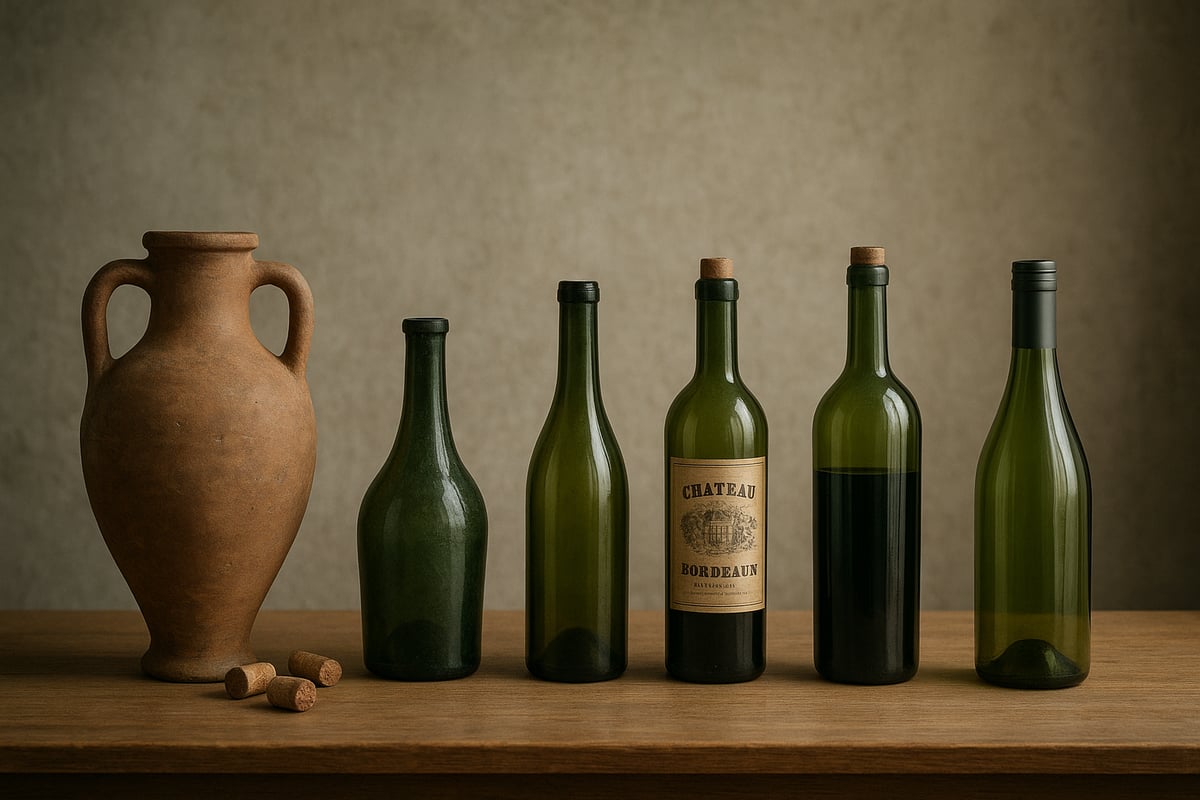
The Origins of Bottled Wine
Before the idea of wine in bottle, winemakers stored their creations in clay amphorae, wooden barrels, or animal skins. These ancient methods often left wine exposed to air, which quickly spoiled its delicate flavors.
The real game-changer arrived in the 17th century, when glass bottles appeared. This advancement allowed wine in bottle to be securely sealed, protecting it from oxidation. Bottling made it possible to age wine, transport it farther, and share it beyond local villages. Suddenly, wine in bottle became a symbol of quality and sophistication, changing how people enjoyed their favorite drink.
Milestones in Wine Bottle Design
By the 19th century, standard shapes and sizes for wine in bottle took center stage. The Bordeaux bottle, with its straight sides and tall shoulders, was designed to trap sediment. Burgundy bottles, with sloping sides, signaled a different wine style. Champagne bottles were built thicker to withstand pressure.
Different regions put their own twist on wine in bottle design. For example, Alsace favored tall, slender bottles for aromatic whites. These shapes are not just about looks—they tell a story about origin and grape variety. This evolution helped wine in bottle become a universal language among wine lovers.
Advances in Bottling Technology
The transition from hand-blown to machine-made bottles in the 20th century made wine in bottles more accessible and consistent—improving glass quality with fewer impurities and stronger bottles, and reducing breakage.
Cork closures became the gold standard for sealing wine in bottle, but technology brought alternatives like screw caps and synthetic corks. These closures help control oxygen exposure, directly influencing how wine in bottle matures. The choice of closure can dramatically impact the taste and longevity of your favorite vintage.
Modern Trends in Wine Bottling
Today, sustainability shapes the future of wine in bottle. Lighter bottles and recycled glass are rising in popularity as eco-conscious choices. Alternative closures, such as screw caps and synthetic corks, now seal over 30% of wines globally.
Bottling is also about innovation. Interactive features, tactile finishes, and digital elements are making their way onto bottles. Curious about where packaging is heading? Discover more about Wine Packaging Trends, highlighting authenticity and interactive engagement for the next era of wine in bottle.
Bottling and Wine Quality
The way wine in bottle is handled affects every sip. Careful bottling preserves the wine’s unique character and extends its life. Renowned wineries often experiment with innovative bottling techniques, seeking the perfect balance between tradition and technology.
Authenticity is closely tied to wine in bottle. Reliable bottling methods guarantee that what you pour is exactly what the winemaker intended. When you choose a wine in bottle from a trusted producer, you’re tasting history, craftsmanship, and the promise of quality.
Decoding the Wine Bottle: Shapes, Colors, and Closures
Every wine in bottle tells a story, not just through its liquid but through its design, color, and closure. If you have ever wondered why bottles look, feel, and function the way they do, you are about to unlock some fascinating secrets. Let us explore how understanding these details can elevate your wine in bottle experience.
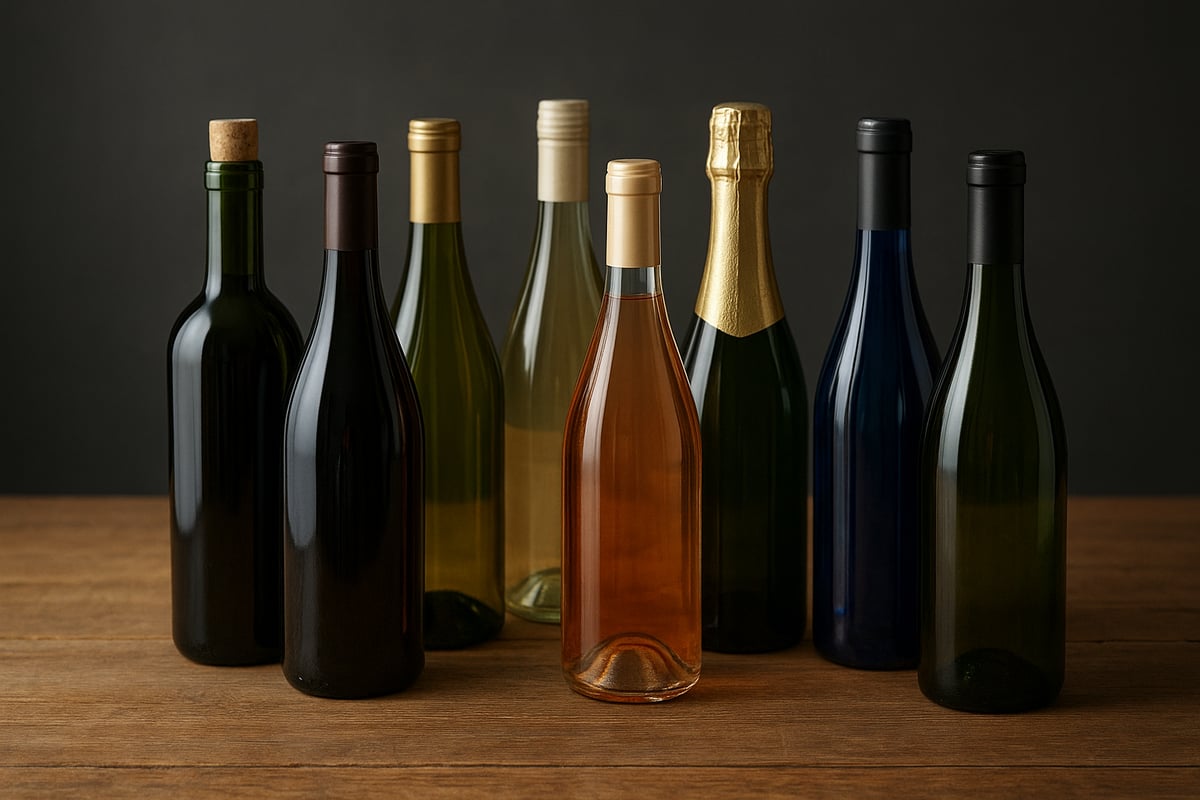
Understanding Bottle Shapes and Their Significance
Not all bottles are created equal. The shape of wine in bottle signals much about what is inside. Bordeaux bottles, with their broad shoulders, are typically used for Cabernet Sauvignon and Merlot, hinting at robust reds. Burgundy bottles are more gently sloped, perfect for Pinot Noir and Chardonnay, sending a message of elegance. Tall, slender bottles often house Riesling or Gewürztraminer, suggesting aromatic whites. Champagne bottles are thick and heavy, built to withstand pressure. By paying attention to the shape of wine in bottle, you can decode grape variety and style before even reading the label.
The Meaning Behind Bottle Colors
Color plays a crucial role in wine in bottle preservation and marketing. Dark green and brown bottles offer UV protection, helping shield wine from light damage. Clear bottles are commonly used for rosé and some whites, showcasing the wine’s color but offering less protection. Blue bottles are rare, often used for unique marketing appeal. Here is a quick comparison:
|
Color |
Common Use |
UV Protection |
Marketing Role |
|---|---|---|---|
|
Green |
Red, white wines |
High |
Classic, premium |
|
Brown |
Fortified, premium |
Very High |
Traditional |
|
Clear |
Rosé, white wines |
Low |
Visual appeal |
|
Blue |
Select whites |
Low |
Distinctiveness |
About 70% of premium wine in bottle uses dark glass, proving how vital color is for both function and branding.
Closures: Cork vs. Screw Cap vs. Alternatives
The closure you find on wine in bottle is more than a seal, it is a choice that impacts aging and enjoyment. Natural cork is traditional, allowing micro-oxygenation that helps certain wines age. However, up to 5% of cork-sealed bottles can suffer cork taint. Synthetic corks are more consistent and eliminate taint, but do not allow the same aging. Screw caps are popular for their reliability, especially in New World regions, and prevent oxidation effectively. Each closure type influences how wine in bottle evolves, so consider your preferences and the wine’s intended lifespan.
Labeling and Regulatory Requirements
When you pick up wine in bottle, the label is your guide. Regulations require information like vintage, region, producer, and alcohol content. Quality designations such as AOC, DOCG, and AVA indicate origin and standards. Optional details might include tasting notes, food pairings, or sustainability certifications. Deciphering these elements can help you select the right wine in bottle for any occasion.
The Role of Branding and Design
Branding is the silent ambassador of wine in bottle. Iconic bottles, like the squat, wax-sealed Château d’Yquem or the artist-designed Mouton Rothschild labels, have shaped consumer perception and even market trends. The psychology behind label fonts, colors, and imagery can make a bottle stand out or blend in. In 2025, expect tactile finishes, bold art, and innovative materials to influence how wine in bottle captures attention and imagination. Next time you choose a bottle, remember, you are not just buying wine, you are choosing an experience.
The Science of Wine Aging in Bottle
Ever wondered what magic happens inside a wine in bottle as it rests quietly in a cellar? The journey from bottling to pouring is a fascinating transformation. Let’s uncover the science, the surprises, and the risks that make every bottle a unique adventure.
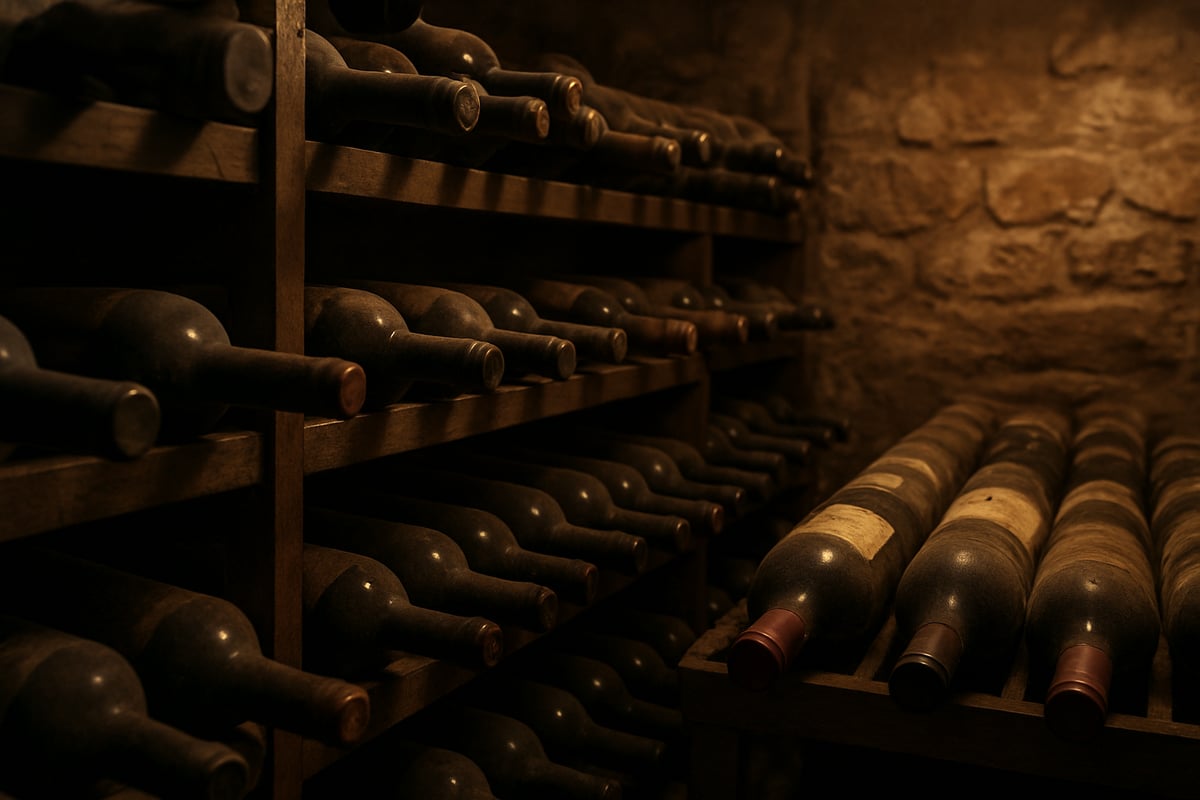
What Happens to Wine During Bottle Aging?
Once sealed, wine in bottle embarks on a slow, graceful evolution. Tannins soften, acidity mellows, and aromatic compounds called esters develop, adding complexity and new flavors.
Oxygen plays a subtle role, sneaking in through closures and gently transforming the wine’s character. Natural cork allows minimal oxygen ingress, while screw caps limit contact almost entirely.
Spotting an aged wine in bottle is possible: look for deeper color, sediment, and softer aromas. Each bottle ages at its own pace, making this process a true blend of science and art.
Wines That Benefit from Bottle Aging
Not every wine in bottle is destined for decades of slumber. Only about 1% of all wines are crafted to improve over 10 years. Grape varieties like Cabernet Sauvignon, Nebbiolo, and classic Bordeaux blends have the structure to age gracefully.
Legendary examples include Barolo and top Bordeaux, which can reveal extraordinary flavors with time. These wines rely on robust tannins and acidity to withstand the years.
Most wines, however, are best enjoyed young. Knowing whether your wine in bottle is built for aging or immediate enjoyment is essential for the best experience.
Factors Influencing Wine Aging Potential
The longevity of wine in bottle depends on a handful of crucial factors. Acidity acts as a preservative, while tannins provide structure. Alcohol and sugar levels also play roles, especially in fortified or dessert wines.
Producer reputation and vintage conditions offer clues to aging potential. Proper storage matters just as much as the wine itself. Key storage factors include:
|
Factor |
Ideal Range |
Impact on Aging |
|---|---|---|
|
Temperature |
55°F (13°C) |
Slows aging, prevents spoilage |
|
Humidity |
60-70% |
Protects cork, prevents leaks |
|
Light |
Low or absent |
Reduces oxidation risks |
In short, a well-made wine in bottle, kept under ideal conditions, can develop beautifully over time.
Recognizing Optimal Drinking Windows
How do you know when your wine in bottle has reached its peak? Labels and vintage charts offer clues, but there’s more to the story.
Younger wines tend to taste vibrant and bold, while mature wines show softer tannins and layered aromas. Look for tasting notes on the label or research the producer’s recommendations.
There are even online tools and apps that help you track optimal drinking windows for your favorite wine in bottle. With a little curiosity, you can catch each bottle at its moment of glory.
Risks and Challenges of Bottle Aging
Aging wine in bottle is not without pitfalls. Common faults include oxidation, which dulls flavors, and cork taint (TCA), which can spoil up to 5% of cork-sealed bottles.
Reduction, where a wine develops unpleasant aromas due to lack of oxygen, is another risk. Here are some key threats:
-
Oxidation: Wine turns brown and loses aroma
-
Cork taint: Musty, moldy off-flavors
-
Sediment: Natural but can affect pouring
Storing your wine in bottle properly—cool, dark, and stable—minimizes these risks and preserves quality.
Innovations in Aging and Preservation
The future of wine in bottle is brighter than ever, thanks to new technologies. Modern closures like screw caps and advanced synthetic corks offer alternatives to traditional cork, reducing the risk of spoilage.
Emerging trends in 2025 include smart bottles with embedded sensors that monitor temperature and humidity, ensuring perfect storage. Some wineries are even experimenting with accelerated aging techniques to simulate years of evolution in just months.
Curious about exploring these innovations firsthand? Many wine clubs now introduce members to new aging and preservation technologies, offering exclusive tastings and insights. You can join the Shades of Vino Wine Club Experience to discover the future of wine in a bottle for yourself.
Step-by-Step Guide: How to Store and Serve Wine in Bottle
Unlocking the full potential of wine in bottle starts long before the first pour. Proper storage and serving reveal the hidden layers, aromas, and textures inside every bottle. Ready to become a home sommelier? Let’s break down each step so your wine in bottle shines at every occasion.
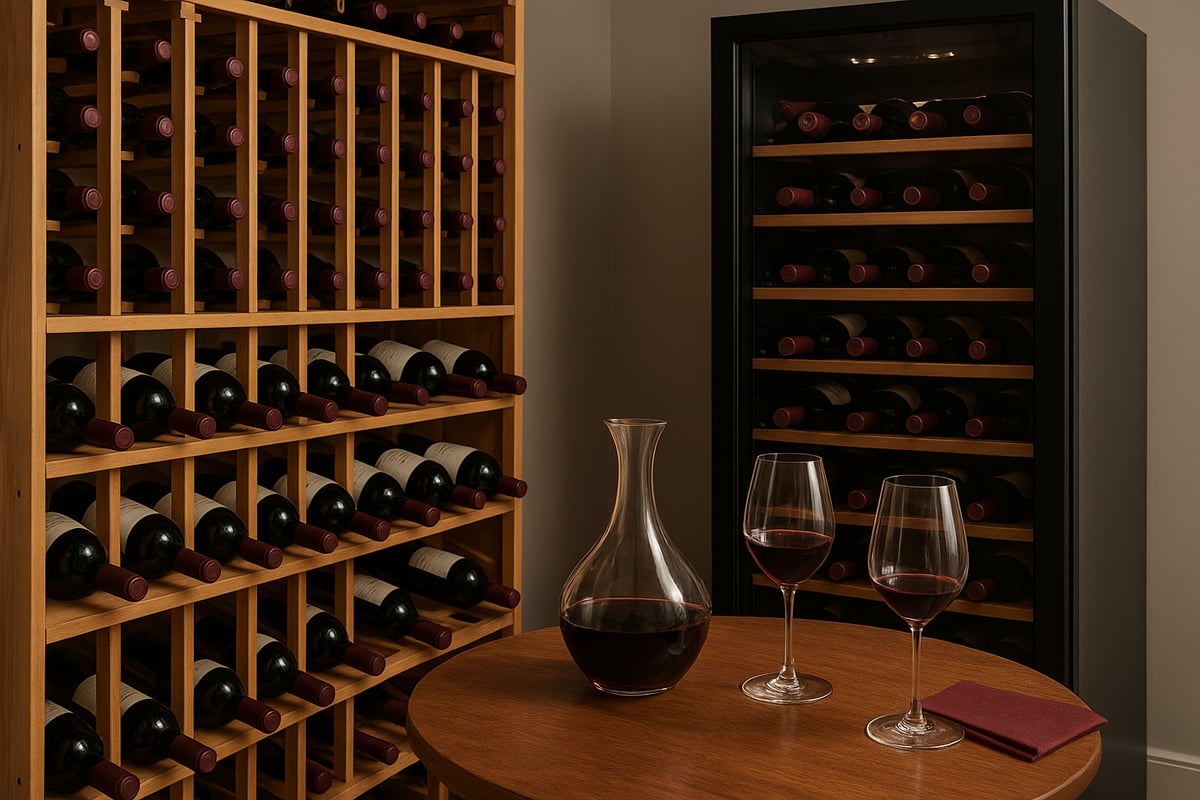
Step 1: Choosing the Right Storage Location
The journey of wine in bottle begins with its storage environment. Consistent temperature is crucial, ideally around 55°F (13°C), with humidity between 60 and 70 percent. This balance keeps corks from drying out or becoming moldy.
Avoid direct sunlight and vibrations, as these can negatively impact wine in bottle over time. If space is limited, wine fridges are excellent alternatives to traditional cellars. For a deeper dive into optimal storage setups, check out How to Store Wine Properly.
Step 2: Positioning and Organizing Bottles
The way you position wine in bottle can make all the difference. Bottles with cork closures should always lie horizontally. This keeps the cork moist and prevents air from slipping in, which could spoil your wine in bottle.
Organize your collection by region, varietal, or planned drinking window. This system makes it easy to track which bottles are ready to open. Did you know? Proper horizontal storage reduces cork drying by up to 80 percent.
Step 3: Monitoring and Maintaining Conditions
Consistency is key for wine in bottle longevity. Use a hygrometer to monitor humidity and a thermometer for temperature. Regularly check these readings to ensure your storage area remains optimal.
Professional cellars often feature automated systems, but home setups can achieve similar results with affordable tools. Remember, even minor fluctuations can impact the quality of your wine in bottle over time.
Step 4: Preparing Wine for Serving
Before serving, let your wine in bottle settle if it has been moved. This allows any sediment to fall to the bottom. Decanting is helpful for young reds or wines with sediment, enhancing aromas and flavors.
Each style of wine in bottle shines at its own temperature:
-
Reds: 60–65°F (16–18°C)
-
Whites: 45–55°F (7–13°C)
-
Sparkling: 40–45°F (4–7°C)
Step 5: Opening and Pouring Techniques
Opening wine in bottle is part of the ritual. Use a quality corkscrew and carefully remove the foil and cork. For older bottles, pour gently to avoid disturbing sediment.
When pouring, tilt the bottle and glass to minimize splashing. Whether you’re hosting a formal dinner or a casual night in, these techniques ensure every glass of wine in bottle is flawless.
Step 6: Preserving Leftover Wine
Not finishing your wine in bottle? No problem. Use vacuum pumps, inert gas sprays, or tight wine stoppers to slow oxidation. These tools can keep wine in bottle fresh for several days.
Here’s a quick guide:
|
Wine Type |
Open Shelf Life (days) |
With Inert Gas (days) |
|---|---|---|
|
Sparkling |
1–3 |
3–5 |
|
White/Rosé |
3–5 |
5–7 |
|
Red |
3–5 |
5–7 |
Preserving with inert gas extends freshness by up to 7 days, so you can savor every drop of wine in bottle.
Reading and Understanding Wine Bottle Labels in 2025
Cracking the code on a wine in bottle label can feel like deciphering a secret language. In 2025, labels are more informative and dynamic than ever, offering a window into the bottle’s origin, quality, and story. Let’s break down what to look for and how each detail impacts your wine in bottle experience.
Mandatory and Optional Label Information
Every wine in bottle must display certain details by law. Expect to see the producer’s name, vintage year, region of origin, and alcohol content. These essentials help you identify the wine in bottle and understand its background.
Optional information is where labels get interesting. Descriptions of tasting notes, suggested food pairings, and sustainability certifications often appear. In 2025, new regulations are making ingredient disclosures and traceability data more common on wine in bottle labels. This transparency empowers consumers and adds a layer of trust.
Decoding Certifications and Quality Seals
Certifications and seals signal the quality and ethical standards of a wine in bottle. Look for badges like Demeter (biodynamic), USDA Organic, or Fair Trade. These symbols confirm specific farming or production practices.
Here’s a quick comparison:
|
Certification |
What it Means |
Common Region |
|---|---|---|
|
AOC/DOCG/AVA |
Quality/Origin |
France/Italy/USA |
|
USDA Organic |
Organic Farming |
USA |
|
Demeter |
Biodynamic |
Global |
Recent data shows a 20% increase in certified sustainable wine in bottle options since 2020, reflecting growing consumer demand for responsibly made wines.
Navigating International Label Differences
Reading a wine in bottle label from another country can be tricky. For example, European wines often spotlight the region (like Bordeaux or Chianti), while US labels focus on grape variety and vineyard. Australia and South America have their own systems, such as GI (Geographical Indication).
Be aware of protected designations: AOC (France), DOCG (Italy), AVA (USA), and GI (Australia). These guarantee authenticity and origin. When buying a wine in bottle globally, watch for unfamiliar terms or missing info that could hide lower quality.
Understanding Marketing Terms and Jargon
Labels are packed with words like “old vines,” “reserve,” or “estate bottled.” What do these mean for your wine in bottle? Some terms, like “estate bottled,” have legal definitions, ensuring the wine was grown and bottled on the same property. Others, such as “reserve,” may be used for marketing without strict regulation.
-
“Old vines”: Suggests older grapevines, often deeper flavor
-
“Reserve”: Can mean higher quality, but not always regulated
-
“Estate bottled”: Legally defined in some regions
Case studies show that words like “reserve” can sway perceptions and even price, though not always reflecting true quality.
Digital Innovations in Wine Labeling
Wine in bottle labels in 2025 are smarter than ever. Many now feature QR codes, augmented reality experiences, or smart labels with embedded sensors. Scan a code and instantly access tasting notes, origin stories, or even verify authenticity.
These digital features help consumers make informed decisions and add a layer of fun to picking out a wine in bottle. For a deep dive into the latest label tech and design trends, check out Wine label design predictions for 2025.
Future Trends: The Next Era of Wine in Bottle
Curious about what tomorrow’s wine in bottle will look like? The landscape is changing fast, blending tradition with cutting-edge innovation. From eco-conscious packaging to digital labels, the next era promises exciting possibilities for every wine lover.
Sustainability and Eco-Friendly Bottling
Eco-conscious choices are transforming the wine in bottle experience. Wineries are reducing their carbon footprint by opting for lightweight bottles, recycled glass, and alternative packaging. These efforts can cut emissions by up to 40 percent, making a significant environmental impact.
Many producers are experimenting with plant-based stoppers and biodegradable labels. Wine lovers are now seeking bottles with minimal packaging and clear sustainability certifications. If you want to dive deeper into these innovations, check out the New Sustainable Wine Trends in 2025 for a comprehensive look at what’s ahead.
The future looks greener as the wine in bottle market embraces responsible practices. Every eco-friendly bottle you choose helps support this vital movement.
Smart Bottles and Connected Wine Experiences
Imagine a wine in bottle that tells its own story. Smart bottles are making this a reality. Embedded chips, NFC, and blockchain authentication are becoming mainstream, allowing drinkers to verify the origin and journey of their wine instantly.
These technologies also aid in provenance tracking and help prevent counterfeiting. Wine in bottle now comes with storage history and tasting notes accessible with a tap of your phone. This connected experience adds a layer of trust and interaction that wasn’t possible before.
Emerging brands in 2025 are using these tools to engage consumers and build loyalty, setting new standards for transparency and enjoyment.
Personalized and Limited-Edition Bottling
Personalization is taking the wine in bottle world by storm. Wineries are offering custom labels, artist collaborations, and exclusive micro-lots for collectors. These limited releases don’t just look good, they also increase perceived value by 25 percent.
Some producers use tactile finishes or create series featuring local artists, turning the wine in bottle into a collectible work of art. Want to see how packaging is evolving? Explore the Four Trends Shaping Beer and Wine Design in 2025 for inspiration on bottle aesthetics.
This trend is all about making each wine in bottle feel unique and special, deepening the connection between producer and drinker.
The Impact of Globalization on Wine Bottling
Borders are blurring in the wine in bottle universe. Cross-border collaborations and international styles are creating hybrid blends that combine Old World finesse with New World innovation.
Globalization means you’ll find a wine in bottle that reflects influences from multiple regions, offering new flavors and experiences. Producers are sharing bottling techniques, leading to more consistent quality and creative packaging.
These international releases are expanding palates and opening doors for adventurous wine lovers who crave something new in every wine in bottle they uncork.
Evolving Consumer Preferences
Today’s drinkers are reshaping the wine in bottle market. There’s a growing demand for lower-alcohol options, natural wines, and transparency in ingredients and sourcing.
Surveys show that 60 percent of millennials prefer a wine in bottle with clear origin information. This shift is driving producers to focus on honest labeling and innovative styles. Consumers are also seeking out bottles with sustainability credentials and minimal intervention.
As preferences change, the wine in bottle industry is adapting quickly to meet these expectations, ensuring every sip is both enjoyable and responsible.
Regulatory and Industry Innovations
New rules and standards are on the horizon for wine in bottle. In 2025, expect stricter environmental regulations and clearer labeling requirements. These changes will help protect both consumers and the planet.
Industry groups are working on bottle standardization to simplify recycling and reduce waste. Digital labels and QR codes are also being adopted for better traceability and education.
Looking forward, the wine in bottle sector is poised for a decade of innovation, blending tradition with technology to create a more sustainable and transparent experience for all.
So now that you’ve uncovered the fascinating ways bottles shape the wine you love—from ancient designs to futuristic smart labels—are you feeling inspired to explore more flavors and stories? The world inside each bottle is as diverse as the people behind them, and there’s no better way to deepen your journey than by tasting wines crafted by passionate BIPOC winemakers. Why not turn your newfound knowledge into a delicious adventure? You can start today and discover wines that offer both incredible taste and meaningful stories. Ready to find your next favorite bottle? Shop Today
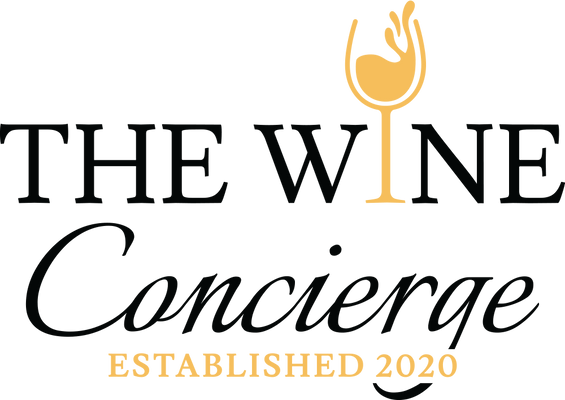
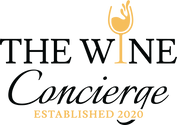
Leave a comment
Please note, comments must be approved before they are published